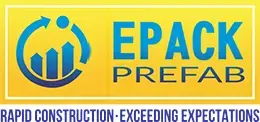Prefabricated construction is one where components are manufactures within a controlled environment followed by on site assembling. This process is faster than traditional construction, something that can be built within days. They can be customized to satisfy their owners’ specific preferences, and can be reconfigured and rearranged conveniently to fit whatever location they are placed in. Prefabricated construction is eco-friendly and comparatively affordable and at times even cheaper.
Among the noteworthy examples in recent times, The Marriott hotel has also embarked on the prefab trend. The company has built its second modular-designed hotel in Oklahoma City. As per sources, the company plans to build around 50 more prefabricated hotels by the end of the current year. These hotels can be constructed in no time and the overall process of construction is much simpler. Moreover, it amounts to lesser waste materials and the cost is significantly lower.
The adoption of prefabrication has been growing at an overwhelming rate in recent times. More and more people are using it, with new designs being created for aesthetic appeal.
Although most prefab homes tend to be located in more rural areas and small towns, the trend has started to grow in many of the developed countries. The Stack is a seven-story apartment building which has been made entirely of prefabricated homes, is the first well known example in Manhattan, New York, USA. From sources “Using cranes to lift the 56 box-shaped modules (which equate to 22 homes) on top of one another, this apartment took a mere 19 days to build.” The design was created by Gluck+, and the modules were shipped to the city already equipped with all the household necessities, from kitchen countertops to mirrors. Complete with rentals ranging from studios to three-bedrooms, this modular building is a milestone of urban design, and a big step towards increased sustainable housing in NYC.
The concept of prefabricated homes are comparatively new. However, they are certainly up-and-coming, and have a lot of potential to gain larger presence worldwide, in the years to come. This contemporary architecture is an innovation that gives a new meaning to the term “sustainable living”, and in the increasingly energy efficient and environmentally friendly world we live in, it looks like prefab homes have a bright future.











